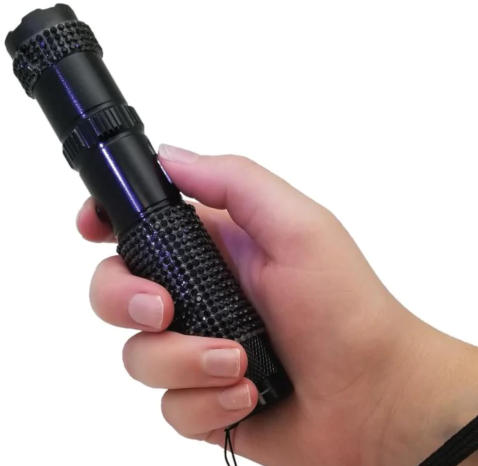Are Stun Guns Effective for Self-Defense?

Do Stun Guns Really Work for Personal Protection?
When considering self-defense tools, many people ask, "Do stun guns really work?" The short answer is yes—but their effectiveness depends on how they are used. Stun guns are non-lethal electroshock devices designed to temporarily incapacitate an attacker by delivering a high-voltage, low-amperage electrical charge. This charge disrupts muscle control, causing pain and confusion, giving you valuable seconds to escape a dangerous situation.
Unlike TASER devices, which fire projectile prongs, stun guns require direct contact with an attacker. This distinction makes them ideal for close-quarters defense.
Jolt RhineStun 75,000,000 Stun Gun Flashlight
How Effective Are Stun Guns?
The effectiveness of a stun gun depends on factors such as:
-
Voltage and Amperage: Most stun guns range from 1 million to over 50 million volts. The amperage, typically under 5 milliamps, ensures the shock is non-lethal but still powerful enough to cause temporary paralysis.
-
Contact Duration: The longer the stun gun is applied (usually 1-5 seconds), the more intense the effect. A 1-second shock causes muscle contractions and pain, while a 3-5 second shock can lead to loss of balance and confusion.
-
Location of Contact: Targeting muscle areas like the thigh, abdomen, or shoulder is more effective than striking bone or fatty tissue.
-
Attacker's State: Factors like drug influence or high pain tolerance can affect how an individual responds to a stun gun.
Are Stun Guns Worth It for Self-Defense?
For those seeking a non-lethal self-defense option, stun guns offer several benefits:
-
Easy to Carry: Many models are strong > compact and fit in a pocket, purse, or belt holster.
-
Quick to Use: With the press of a button, a stun gun can deliver an immediate shock.
-
Non-Lethal: Unlike firearms, stun guns do not cause permanent harm, making them a preferred choice for personal defense.
-
Legal in Most States: Stun guns are legal for civilian use in most areas, but laws vary by state. Always check your local regulations before purchasing.
Stun Gun vs. TASER: Which is Better for Self-Defense?
Some people wonder if they should carry a stun gun or a TASER for self-defense. TASER devices can be used from a distance, firing prongs up to 15 feet away, while stun guns require direct contact. If you want to learn more about the differences, check out our full guide here: Stun Gun vs. TASER.
Choosing the Right Stun Gun for Protection
When selecting a stun gun, consider these features:
-
Built-in Flashlight: A bright LED light can disorient an attacker and improve visibility at night.
-
Rechargeable Battery: Many modern stun guns use USB or built-in rechargeable batteries for convenience.
-
Safety Features: Look for a disable pin or safety switch to prevent accidental discharge.
-
Compact Design: Keychain or mini stun guns offer easy access in emergencies.
Final Thoughts: Should You Carry a Stun Gun?
Stun guns are an effective self-defense tool when used correctly. They provide a non-lethal option to deter attackers and create an opportunity to escape. However, proper training and situational awareness are key to using them effectively. If you’re looking for a reliable, easy-to-use self-defense weapon, a stun gun can be a smart investment in personal safety.
For more self-defense tools, check out our full selection of Stun Guns.
Add your comment now!
Post CommentRecent posts
-
04/25/2025Safety Tips for Remote Workers
-
04/25/2025Self-Defense Tips for Runners
-
04/25/2025Best TASER Device for Personal Protection



